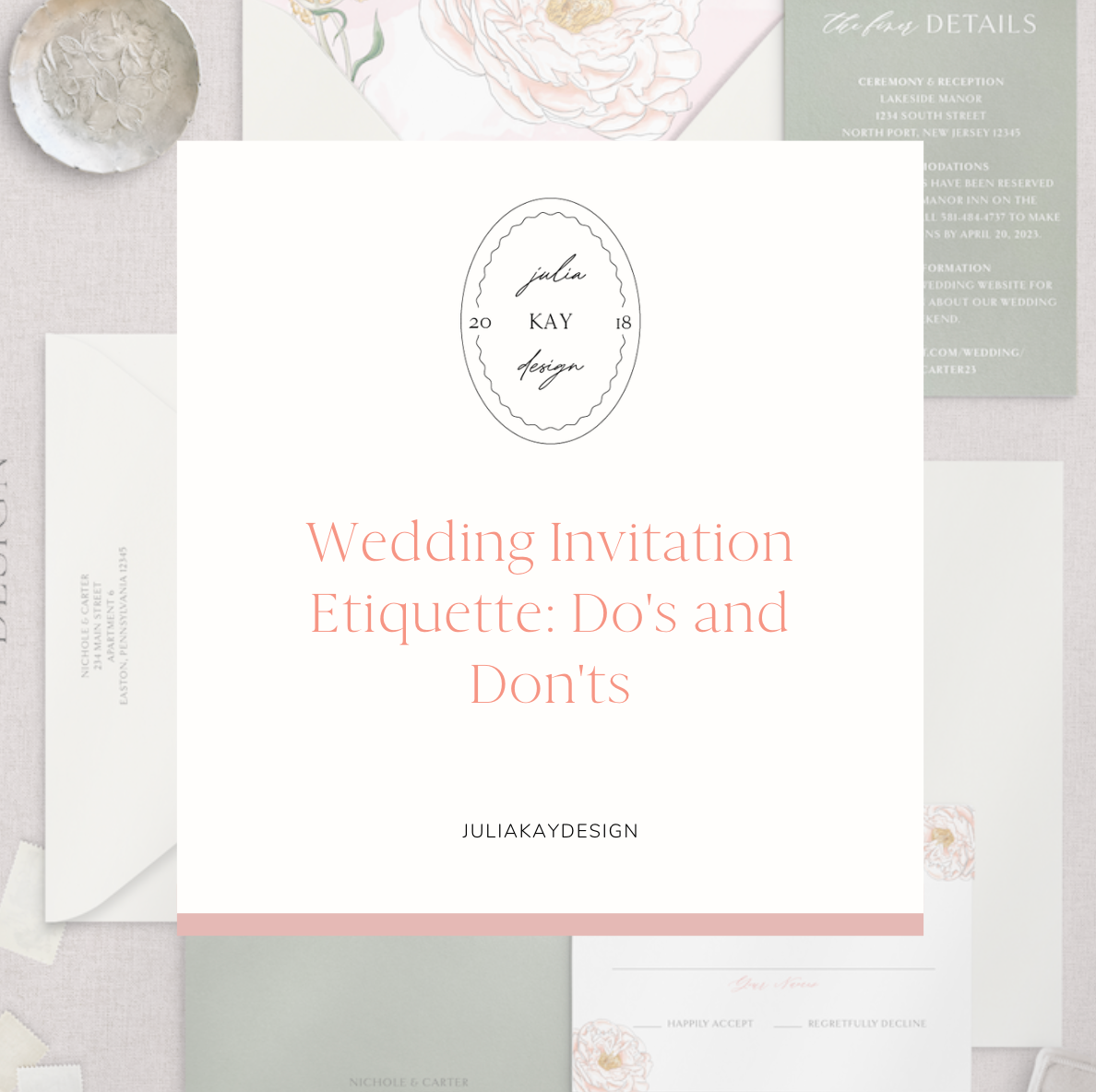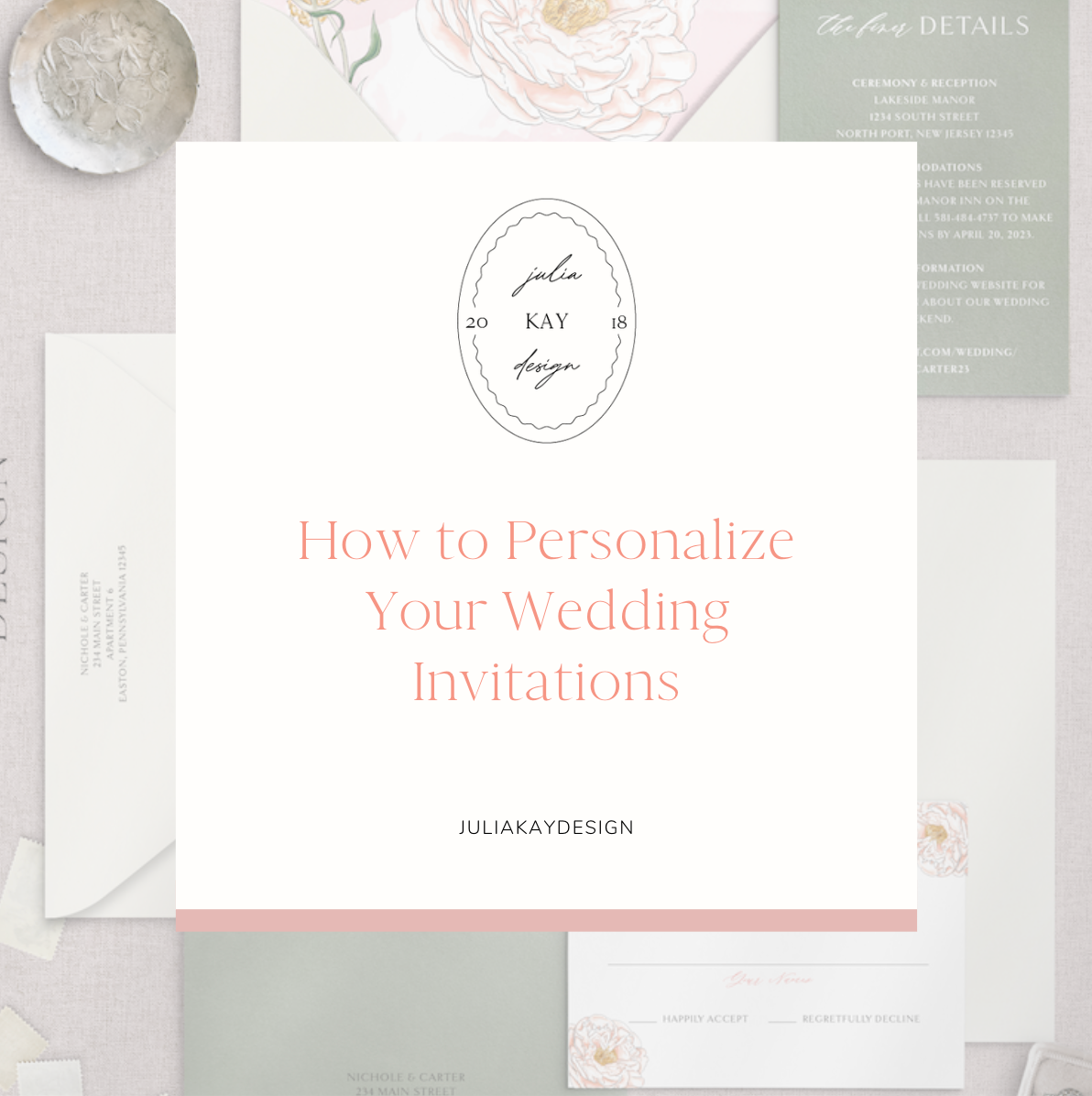Wedding Invitation Etiquette: Do's and Don'ts

Navigating the intricacies of wedding invitation etiquette can be as complex as planning the wedding itself. With traditions evolving and new trends emerging, it’s important to strike a balance between respecting etiquette and embracing your personal style. At Julia Kay Design, we’re here to guide you through the do's and don'ts of wedding invitation etiquette, ensuring your invitations are as flawless in form as they are in design.
Do: Be Mindful of Timing
Timing is everything when it comes to wedding invitations. As a general rule, send your invitations out 6 to 8 weeks before your wedding date, allowing guests ample time to RSVP. If you’re planning a destination wedding or marrying during a peak holiday period, consider sending them out 3-4 months in advance to give your guests more time to make travel arrangements.
Don't: Overlook the Importance of Clarity
Your invitation should clearly communicate the key details of your wedding: who, what, where, and when. Ensure the names of the bride and groom, the ceremony location, and the date and time are prominently featured and easy to read. Avoid using overly fancy fonts or language that might confuse your guests.
Do: Consider Your Words Carefully
The wording of your invitation can set the tone for your wedding and should reflect its formality. Traditional invitations often use third-person language and include full names and titles, while modern invitations can be more relaxed, using first-person language and excluding titles if desired. Whatever your choice, ensure it aligns with the overall tone of your event.
Don't: Forget About RSVP Instructions
Make it easy for your guests to RSVP by including clear instructions and a deadline. Whether you’re using a reply card, an email address, or a wedding website, your guests should know exactly how and by when to respond.
Do: Respect Plus-One Protocol
Navigating plus-ones can be tricky, but a good rule of thumb is to offer plus-ones to married, engaged, or long-term partners. Your invitation should clearly state whether a guest is invited solo or with a plus-one to avoid any confusion.
Don't: Overcrowd Your Invitation
While it’s tempting to include all the details of your wedding day on the invitation, too much information can overwhelm your guests. Stick to the essentials on the main invitation and consider using a separate card or a wedding website for additional details such as directions, accommodations, and registry information.
Do: Use Inner and Outer Envelopes for Formal Weddings
For formal weddings, using both an inner and outer envelope can add a layer of tradition and elegance. The outer envelope features the guest's address and return address, while the inner envelope lists the names of the invited guests, offering clarity on who is invited.
Don't: Skimp on Quality
Your wedding invitation is the first impression guests will have of your wedding. Opting for high-quality paper and printing techniques reflects the significance of the occasion and shows your guests they are valued.
At Julia Kay Design, we understand the importance of etiquette in creating wedding invitations that honor tradition while reflecting your personal style. With our expertise and your vision, we can craft invitations that not only announce your special day but do so with grace, elegance, and respect for your guests.
0 comments



